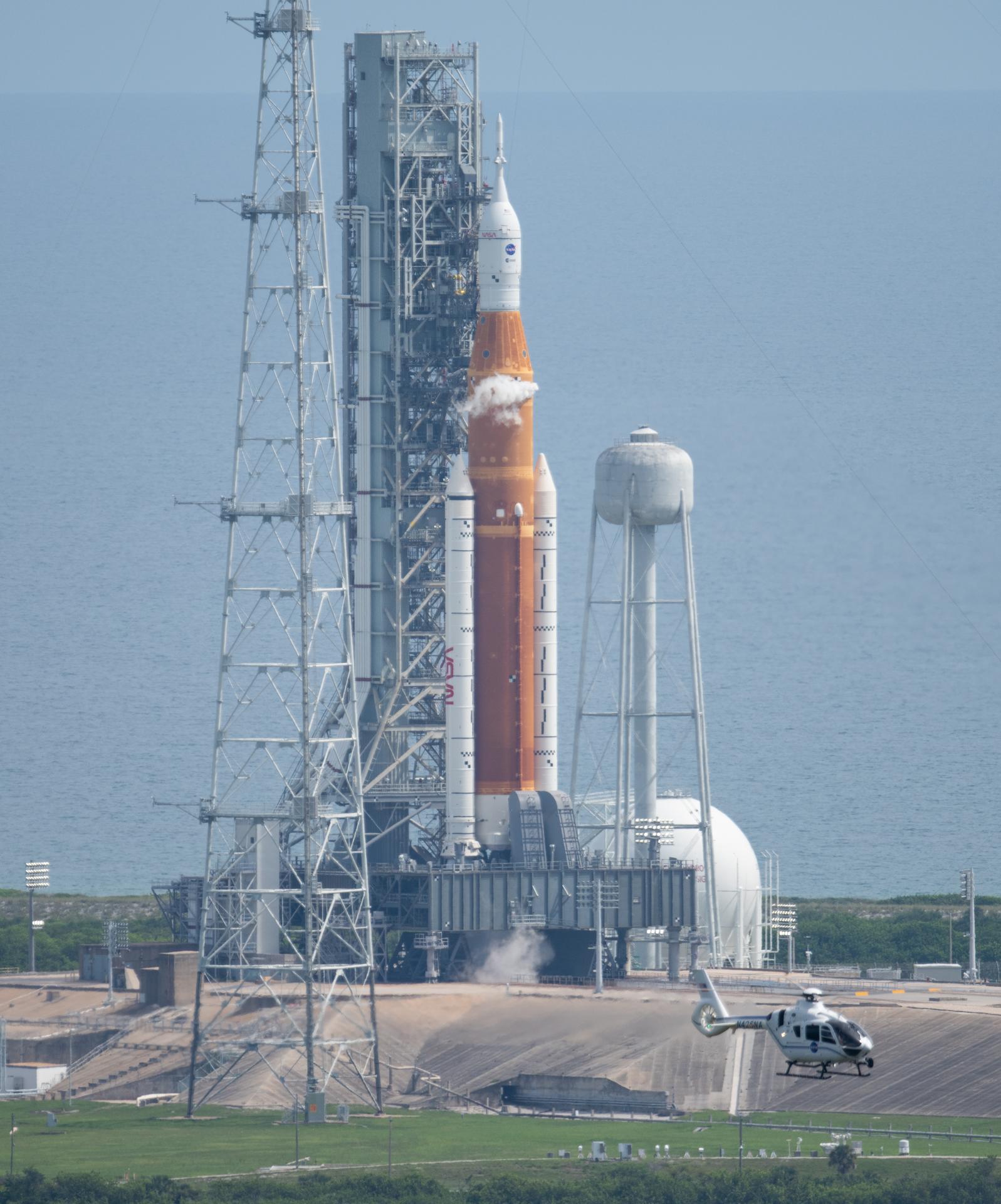Nasa to repair Moon rocket fuel leak on the launch pad after second scrubbed launch attempt
Nasa will attempt to fix a leak in its rocket fueling system with its big Moon rocket still on the launch pad ahead of a potential third launch attempt in late September

Nasa will attempt to repair the fuel leak that forced the agency to postpone the second launch attempt of its big new Moon rocket without rolling the rocket off the launch pad.
Nasa’s attempted to fuel its Space Launch System (SLS) rocket for its first test flight on Saturday, 3 September, but was forced to call the launch off due to a leak in a quick disconnect, an interface between the liquid hydrogen rocket fuel line that loads propellant into the rocket and the rocket’s fuel tank.
The agency will not attempt another launch earlier than 19 September.
Nasa will now attempt to replace a seal on the quick disconnect while the rocket remains at launch complex 39B at Kennedy Space Center, on Cape Canaveral, Florida, rather than roll back immediately to the Vehicle Assembly Building, a towering rocket hangar where Nasa conducts more complex repair, testing, and launch preparation work on the SLS rocket.
On Tuesday, Nasa announced the repair decision in a blog post, but did not elaborate on the reason for making the repairs on the launch pad. The same blog noted that Nasa must roll the SLS back into the Vehicle Assembly Building before its next launch anyway in order to reset the batteries of the launch termination system, an explosive device designed to destroy the rocket should it get out of control and pose a hazard to people on the ground.
SLS is the cornerstone of Nasa’s Artemis Moon program, which aims to return human astronauts to the lunar surface by 2025. Nasa is currently working toward the launch of Artemis 1, the first mission of the program and an uncrewed flight test for the SLS rocket and the Orion spacecraft it will carry first to orbit, and then power on a course to the Moon.
Nasa first attempted to launch the Artemis I mission on 29 August, but that launch was also postponed, or “scrubbed,” due to multiple compounding factors. Bad weather threatened at the beginning and end of the two-hour launch window, while a faulty liquid hydrogen valve — different than the leak encountered on 3 September – and an engine that refused to reach the proper preflight temperature forced Nasa to call the launch off.
Assuming Nasa can repair the quick disconnect that derailed Saturday’s launch attempt and can get a waiver from the US Space Force, which manages range safety at Cape Canaveral so that the SLS flight termination system batteries do not need to be reset, the next launch window for Artemis I runs from 19 September through 4 October.
If Nasa must roll the big rocket back into the Vehicle Assembly Building, the space agency may need to target the next launch window, which runs from 17 October through 31 October.
And if need be, Artemis I will fly even later in the year, or sometime in 2023. As Nasa Administrator Bill Nelson said after the space agency scrubbed the first launch attempt on 29 August, “We go when it’s ready. We don’t go until then.”
Join our commenting forum
Join thought-provoking conversations, follow other Independent readers and see their replies
Comments
Bookmark popover
Removed from bookmarks